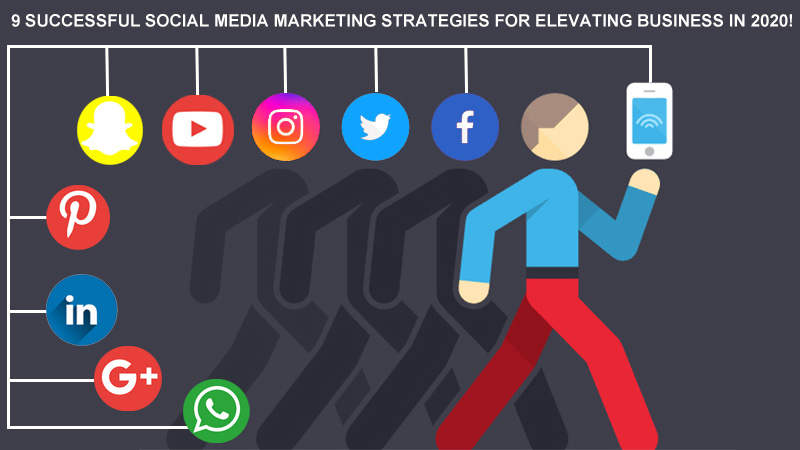In today’s digitally-driven world, social media has emerged as a cornerstone in the landscape of business marketing. Its ubiquity and power are such that it’s no longer just an option for businesses – it’s a necessity. Social media platforms offer a unique space where businesses can not only express their brand voice but also directly engage with their audience, making marketing a more interactive and personal experience. This approach has transformed the way companies approach their marketing strategies, making it essential to understand the nuances of social media marketing.
Social media marketing presents a myriad of benefits for businesses of all sizes. It’s a tool that levels the playing field, allowing small startups to gain visibility alongside established corporations. Through effective social media strategies, businesses can enhance brand awareness, improve customer engagement, and even drive sales, all while building a community of loyal followers. These platforms offer a direct line to consumers, allowing for immediate feedback and fostering a sense of connection that traditional marketing channels often lack.
Table of Contents
Understanding Your Audience
One of the fundamental aspects of successful social media marketing is understanding your audience. Identifying and comprehending who your target audience is forms the backbone of any effective marketing strategy. It’s not just about reaching a large number of people; it’s about reaching the right people – those who are most likely to engage with your brand and eventually become customers.
Tips on Researching and Analyzing Your Audience:
- Utilize Social Media Analytics: Platforms like Facebook, Instagram, and Twitter provide in-built analytics tools that offer valuable insights into the demographics of your followers. This data includes age, gender, location, and even the times they are most active online.
- Conduct Surveys and Polls: Engaging with your audience through surveys and polls can be an effective way to understand their preferences and opinions. This direct feedback can guide your content strategy and product development. Forbes provides an insightful article on how to effectively use surveys in social media.
- Monitor Engagement Patterns: Pay attention to which posts get the most engagement. Are certain topics, formats, or times of day more successful? This information can help tailor your content to match your audience’s interests and behaviors.
- Competitor Analysis: Analyzing your competitors’ social media strategies can provide insights into what might work for your audience. Look at their most successful posts and see how you can adapt those strategies to fit your brand.
- Creating Personas: Based on your research, create buyer personas representing your ideal customers. These personas should include demographic details, interests, and behavioral traits, and will serve as a guide in creating content that resonates with your audience.
Choosing the Right Platforms

The landscape of social media is diverse, with each platform offering unique features and attracting different audiences. Choosing the right platforms for your business is crucial, as it determines where you’ll focus your marketing efforts and resources. It’s about finding the sweet spot where your business’s offerings align with the platform’s user base.
Overview of Popular Social Media Platforms:
- Facebook: With billions of active users, Facebook is a versatile platform suitable for a wide range of businesses. It’s particularly effective for building community, customer service, and targeted advertising.
- Instagram: Highly visual and trendy, Instagram is ideal for brands that can leverage visual storytelling, such as fashion, food, and lifestyle.
- LinkedIn: As a professional network, LinkedIn is perfect for B2B companies, providing opportunities for networking, thought leadership, and industry-specific content.
- Twitter: For real-time engagement and short, impactful messages, Twitter is the go-to platform. It’s excellent for news, customer service, and direct engagement with followers.
- TikTok: Rapidly growing in popularity, TikTok offers a creative and youthful space ideal for brands looking to tap into viral trends and reach a younger demographic.
Guidance on Selecting the Best Platforms:
- Align with Your Audience: Choose platforms where your target audience is most active. For instance, if your audience skews younger, platforms like Instagram and TikTok might be more effective.
- Consider Your Content Type: What type of content does your business create? If it’s visually driven, Instagram and Pinterest might be ideal. For more informational content, LinkedIn and Twitter could be better choices.
- Resource Allocation: Assess the resources you can allocate to social media marketing. Some platforms require more time and effort to create content for than others.
- Business Goals: Align your choice of platform with your business goals. Are you looking to build brand awareness, generate leads, or provide customer service? Different platforms offer different advantages for these goals.
Crafting Your Message

In the realm of social media marketing, content is king. But not just any content – your message needs to resonate with your audience while reflecting your brand’s voice and values. Consistency in your messaging across all platforms is key to building brand recognition and trust.
Tips for Creating Resonant Content:
- Understand Your Brand Voice: Your brand’s voice should be distinct and consistent across all content. Whether it’s professional, playful, informative, or inspirational, it should reflect your brand’s personality.
- Value-Driven Content: Always aim to provide value through your content. This could be educational, entertaining, or inspiring. Your audience should gain something from every interaction with your brand.
- Storytelling: People connect with stories. Use storytelling to make your brand more relatable and memorable. Share stories behind your products, customer testimonials, or even day-to-day operations.
- Visual Consistency: Along with verbal messaging, visual consistency is crucial. This includes your logo, color scheme, and the overall aesthetic of your visual content. It helps in creating a cohesive brand image.
- Engage with Current Trends: While maintaining your brand voice, don’t shy away from engaging with current trends or popular topics on social media. It shows that your brand is up-to-date and relatable.
Engagement and Interaction
Engagement on social media is not just about posting content; it’s about fostering a two-way conversation with your audience. This interaction is the heart of social media marketing, building a community around your brand and turning passive followers into active participants.
Ways to Engage with Your Audience:
- Responding to Comments and Messages: Show that you value your audience by promptly responding to their comments and messages. This personal touch can significantly enhance customer loyalty.
- Hosting Live Sessions: Utilize live features on platforms like Instagram, Facebook, or LinkedIn to host Q&A sessions, product launches, or behind-the-scenes tours. Live interactions make your audience feel more connected to your brand.
- Running Contests or Giveaways: These are great for increasing engagement and reach. Make sure they’re relevant to your brand and provide value to your audience.
- User-Generated Content: Encourage your followers to create content related to your brand, like photos or stories, and feature them on your profile. It’s an excellent way to build community and trust.
- Regular Interaction: Regularly liking, commenting, and sharing relevant content from your audience or other brands can help maintain an active presence and foster relationships.
Building a Loyal Community:
- Consistency: Regular posting and interaction help maintain a consistent presence, keeping your brand at the top of your audience’s mind.
- Authenticity: Be genuine in your interactions. Authenticity builds trust and a stronger connection with your audience.
- Listening: Pay attention to the feedback and suggestions from your audience. It’s a valuable source of insights and helps in adapting your strategy to better meet their needs.
Analytics and Adaptation
To continually improve and refine your social media strategy, it’s essential to track and analyze your performance. This data-driven approach allows you to understand what works, what doesn’t, and how you can optimize your social media efforts.
Importance of Tracking Metrics:
- Engagement Rates: Look at likes, comments, shares, and other forms of interaction to gauge how engaging your content is.
- Reach and Impressions: These metrics help you understand how far your content is spreading and how many people are seeing it.
- Follower Growth: Track how your follower base is growing over time. This can be an indicator of the effectiveness of your content and strategy.
- Click-through Rates: For content aimed at driving traffic to your website, monitor how many people are clicking through.
- Conversion Rates: Ultimately, see how your social media efforts are contributing to your business goals, like sales or leads.
Using Insights for Strategy Refinement:
- Experiment and Adapt: Use the insights to experiment with different types of content, posting times, and strategies to see what resonates best with your audience.
- Content Optimization: Refine your content based on what types of posts perform best. If certain themes or formats consistently engage your audience, focus more on those.
- Audience Understanding: Analytics can offer deeper insights into your audience’s preferences and behaviors, helping you tailor your strategy to better meet their needs.
Integrating with Overall Marketing Strategy
Social media marketing shouldn’t exist in a vacuum; it should be an integral part of your overall marketing strategy. This integration ensures that your marketing efforts are cohesive and more effective.
Integrating Social Media:
- Aligned Messaging: Ensure that your social media messaging aligns with your overall brand message and marketing goals. Consistency across different channels reinforces your brand identity.
- Cross-Promotion: Use your social media platforms to complement and promote other marketing initiatives, like email campaigns, events, or product launches.
- Feedback Loop: Utilize the insights and feedback from social media to inform other marketing strategies. The direct customer feedback available through social media is invaluable for understanding customer needs and preferences.
Examples of Successful Integration:
- A company launching a new product uses social media to create buzz, coupled with email marketing for more detailed information.
- A brand uses insights from social media trends to inform its content marketing strategy, creating blog posts on topics that are popular among its social media audience.
Conclusion
Social media marketing is a dynamic and powerful tool for businesses to connect with their audience, build brand loyalty, and achieve their marketing goals. By understanding your audience, choosing the right platforms, crafting resonant messages, engaging actively, analyzing performance, and integrating with your overall marketing strategy, you can leverage social media to its fullest potential.
Remember, social media is constantly evolving. Stay adaptable, keep learning, and never hesitate to experiment with new strategies. Your audience is out there, ready to engage with your brand. Embrace the opportunities that social media marketing offers, and watch your business grow.
Check out the rest of the ‘Updated Ideas‘ site; there are some cool articles waiting for you! Fancy writing for us? Just give that contact button in the top right a tap. Cheers!

